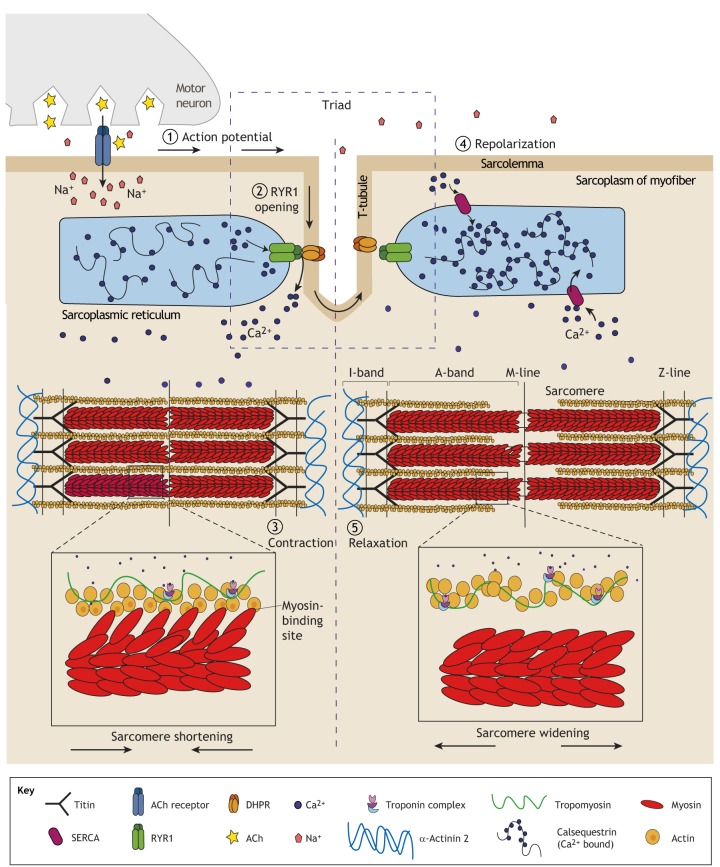Fig. 1.
Contraction and relaxation in skeletal muscle. (1) In healthy skeletal muscle, an action potential from the motor neuron triggers acetylcholine (ACh) release at the neuromuscular junction, which induces an action potential along the muscle myofiber sarcolemma. The signal is propagated along the sarcolemma and the network of deep invaginations called T-tubules. T-tubules (shown here in dashed box) together with two terminal cisternae of the sarcoplasmic reticulum (SR), the main Ca2+-storage region in skeletal muscle, form the triad. The triad is central to excitation-contraction coupling (ECC), the process by which an action potential triggers the synchronous contraction of the myofibrils, leading to muscle contraction. (2) The change in membrane potential at the T-tubule caused by the action potential triggers a conformational change to the voltage-sensor subunit of the dihydropyridine receptor (DHPR), which triggers the opening of RYR1 in the terminal cisternae of the SR, to which it is mechanically coupled. RYR1 releases large amounts of Ca2+ into the sarcoplasm, where it interacts with the repeating contractile units of the myofibrils, called sarcomeres. (3) Ca2+ binds to the troponin complex, triggering the reconfiguration of the actin-tropomyosin structure, which exposes myosin-binding sites and allows myosin heads to bind to actin via crosslinks. Cyclical actin-myosin binding shortens the sarcomere via the sliding-filament mechanism first theorized by Huxley, Hansom and Niedergerke in 1954 (Huxley and Hanson, 1954; Huxley and Niedergerke, 1954). This results in muscle contraction. (4) Repolarization of the sarcolemma and T-tubules closes the DHPR and RYR1, preventing further Ca2+ release. Sarcoplasmic Ca2+ is rapidly sequestered into the SR via sarco/endoplasmic reticulum Ca2+-ATPase (SERCA) pumps, which enable the actin-tropomyosin structure to return to its original conformation, blocking myosin-head binding and resulting in muscle relaxation (5) (Gomes et al., 2002; Smith et al., 2016). See Box 3 for a glossary of certain terms.

